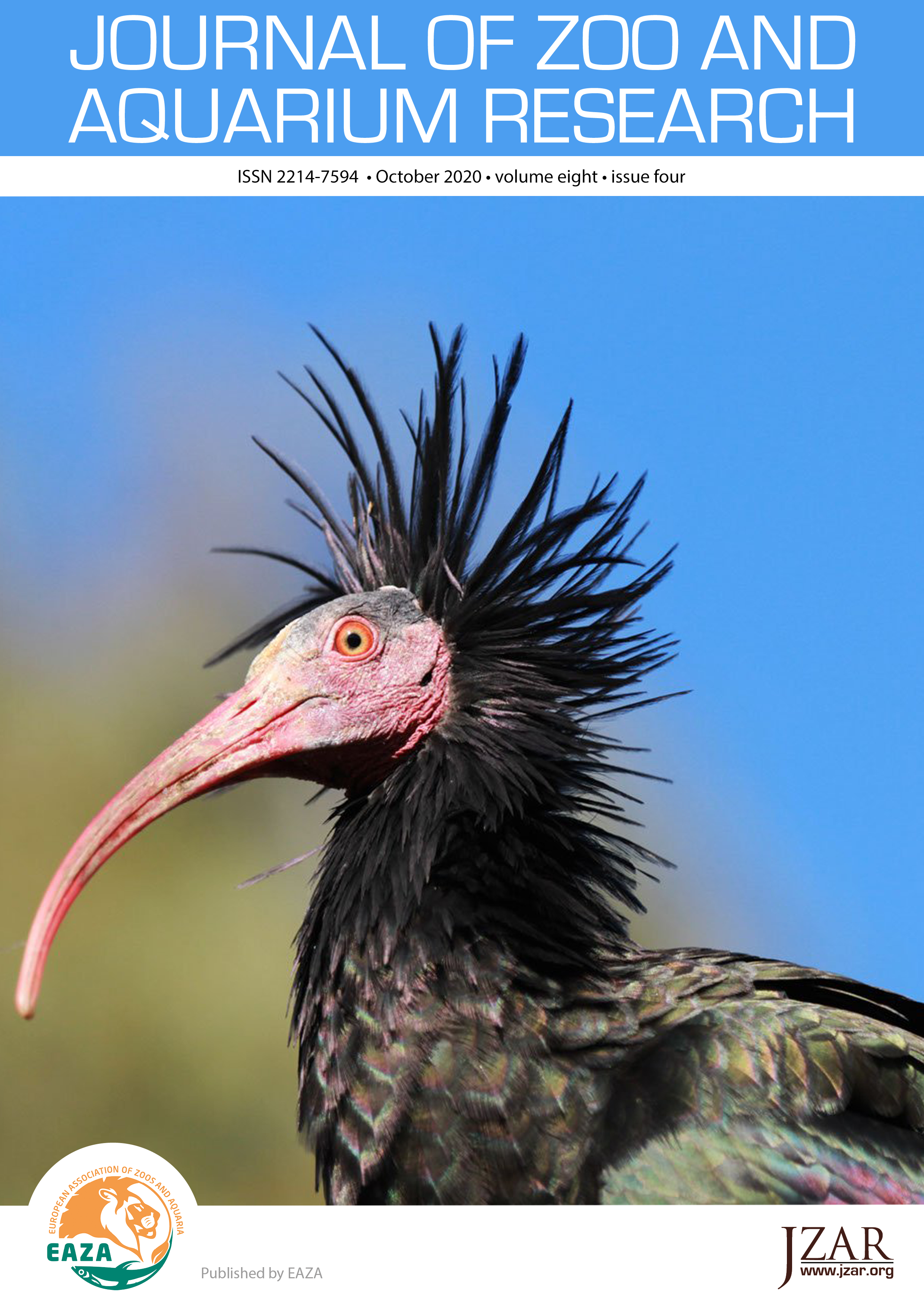How the life support system can affect pinniped eye health: a case study with long-nosed fur seal (Arctocephalus forsteri)
DOI:
https://doi.org/10.19227/jzar.v8i4.525Keywords:
pinniped, fur seal, eye health, life support system, disinfection by-products, trainingAbstract
Eye health issues have commonly been reported in captive pinnipeds. Excessive exposure to UV light, poor enclosure design features and suboptimal water quality have all been associated with eye pathology in pinnipeds. A long-nosed fur seal Arctocephalus forsteri developed corneal disease shortly after introduction into a new facility. Medical therapies provided some alleviation of symptoms, but long-term sustained improvements in eye health were only achieved after life support system modifications. These modifications centred on lowering the production of disinfection by-products by removing most of the organic matter before applying ozone to the system. The reduction in eye pain following improvements in water quality were also critical for the keepers to be able to train the fur seal to receive eye drops voluntarily.
Downloads
Published
How to Cite
Issue
Section
License
JZAR fulfils the DOAJ definition of open access and provides free and open access to the full text of all content without delay under a Creative Commons licence. The copyright holder of JZAR publications grants usage rights to third parties, allowing for immediate free access to the work and permitting any user to read, download, copy, distribute, print, search, or link to the full texts of articles.







